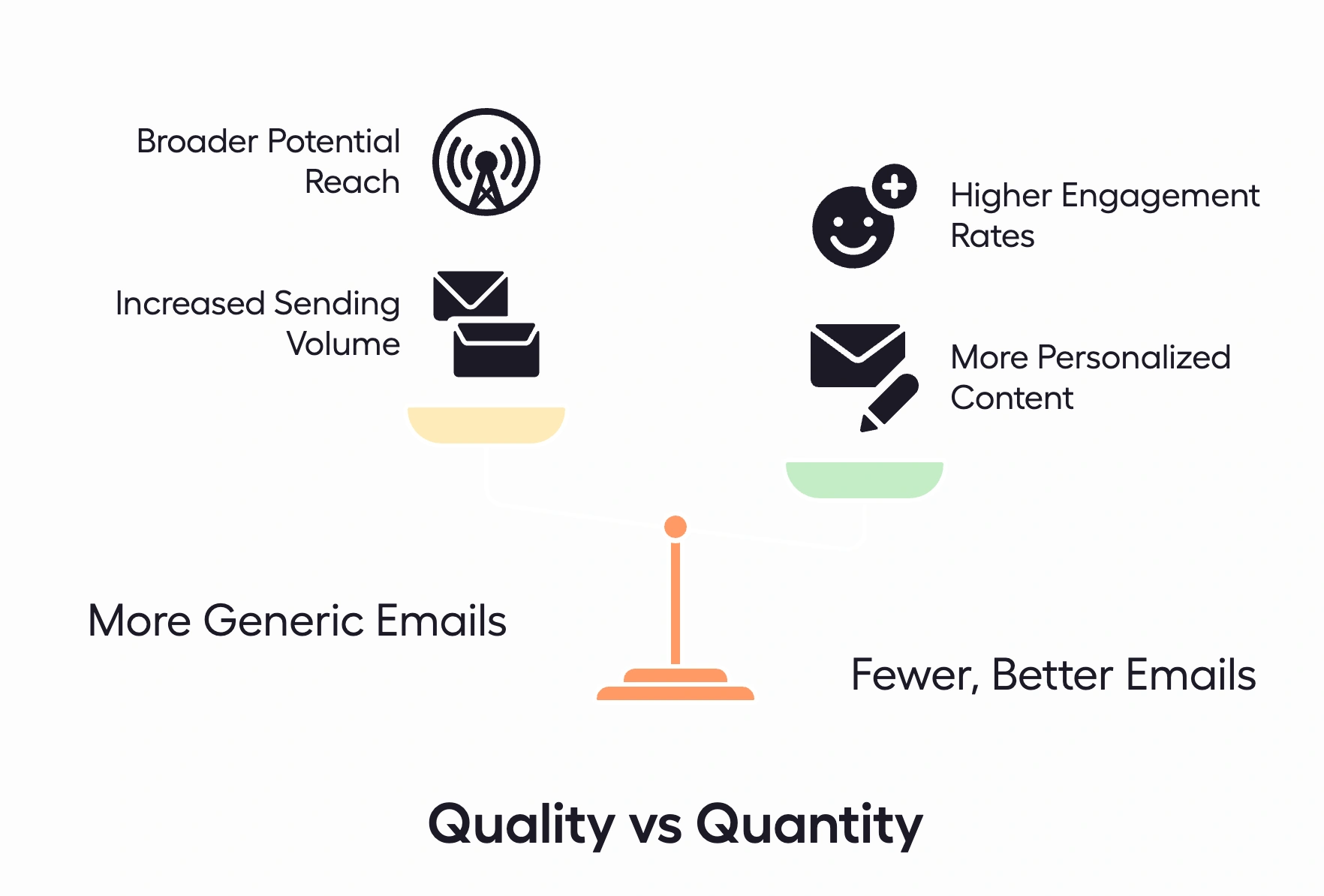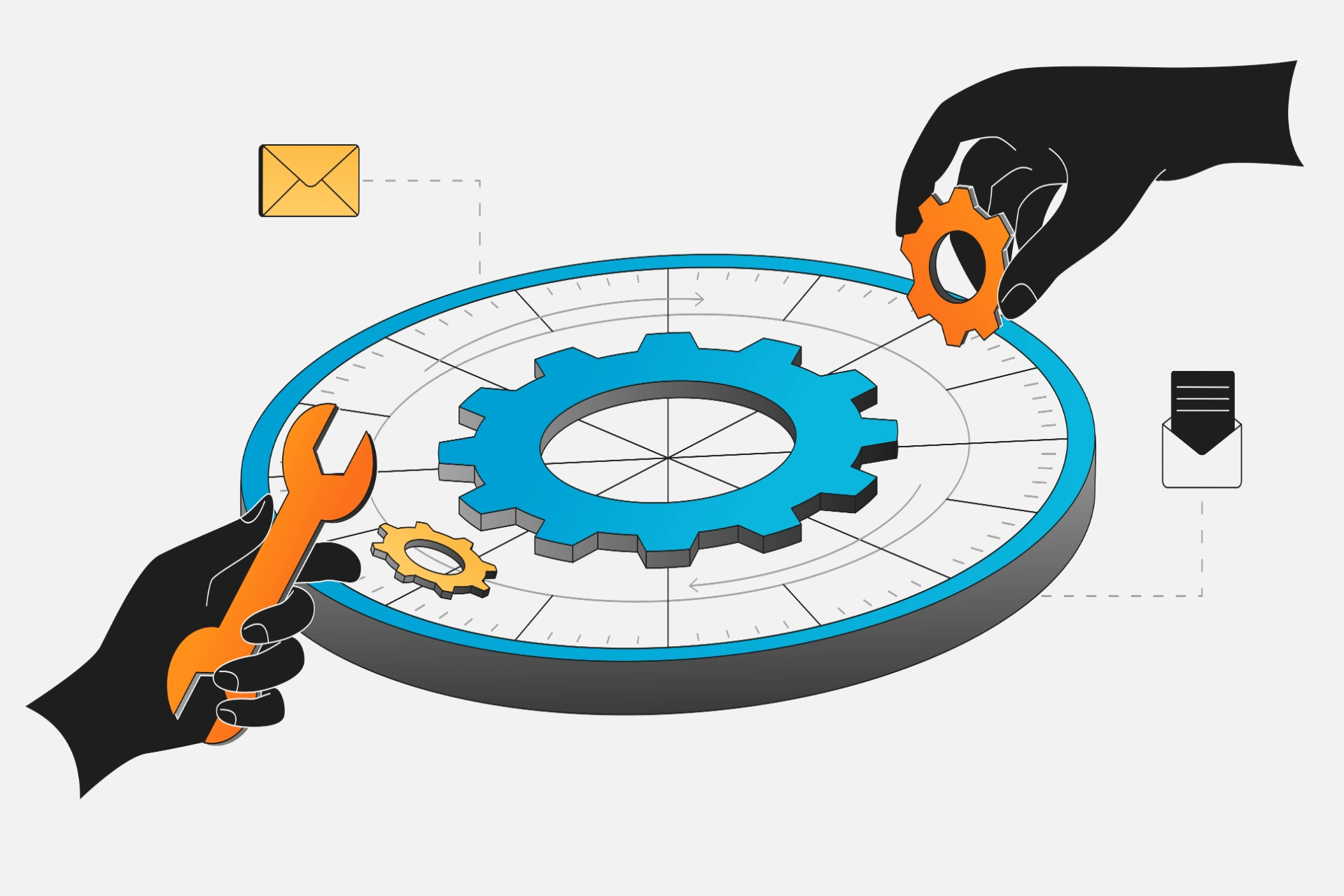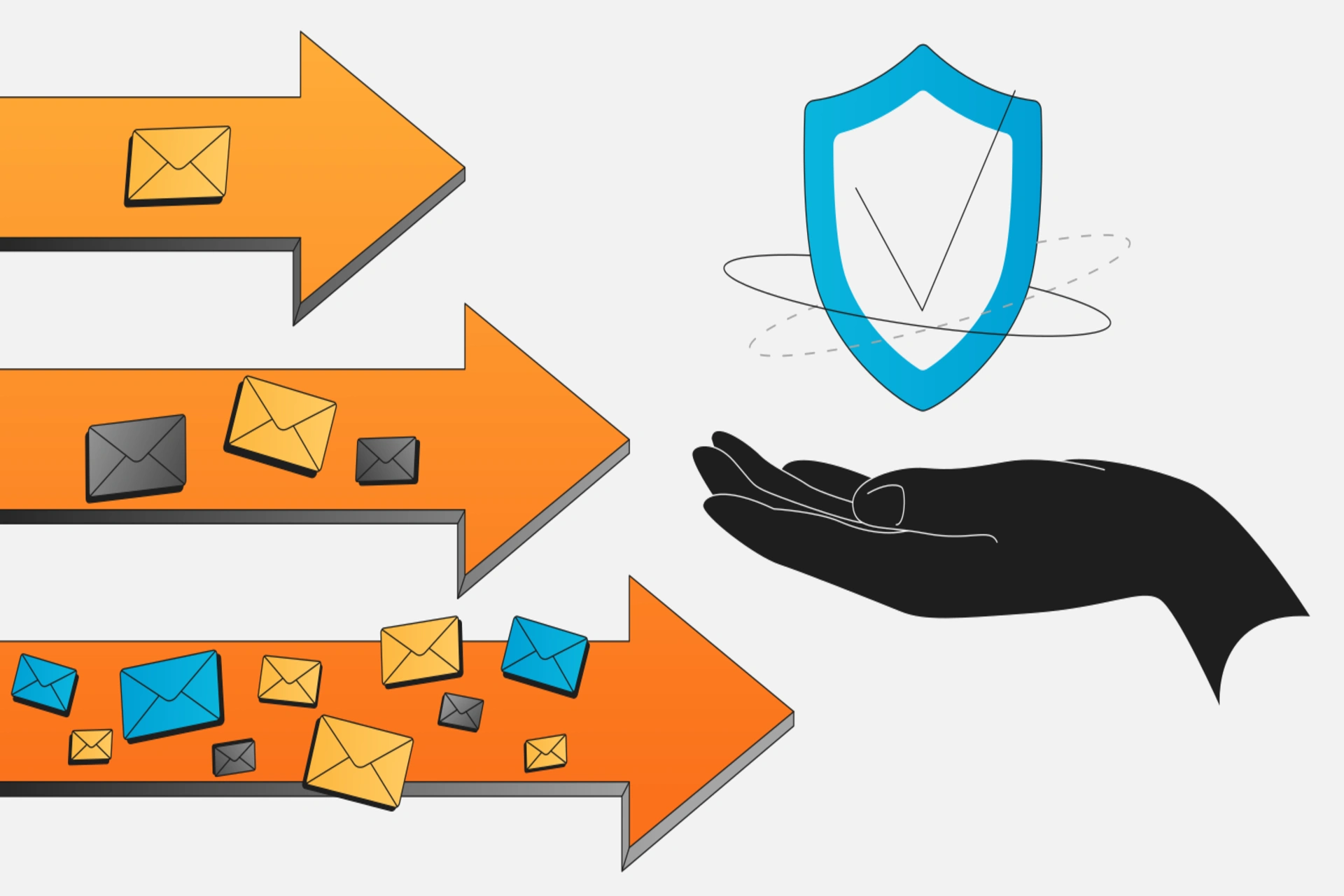
How Many Cold Emails to Send Per Day? The Definitive Answer
Ah, the cold email dilemma! Your finger hovers over the send button while your brain plays a dramatic game of "email roulette." Send too few, and you're leaving money on the table. Send too many and suddenly you're the digital equivalent of that person who talks too loudly at parties.
Been there? We have too.
So let's crack the code on finding your perfect daily sending volume - where your inbox doesn't get blacklisted and your sales pipeline actually fills up.
Cold Email Limits: What You Need to Know
Let's face it - email providers aren't huge fans of people firing off hundreds of messages like a digital gatling gun. They've set up barriers to keep the spam police happy, and you need to play by their rules.
What's really happening behind the scenes?
Your sender reputation is like your credit score for emails. Every time someone opens your message, replies, or (gulp) marks you as spam, the email gods are taking notes. And just like your actual credit score, it takes forever to build and seconds to tank.
Recent data shows a shocking 45% of global email traffic gets marked as spam – making deliverability a serious uphill battle
We've learned that intent-based targeting dramatically changes the equation. When you're reaching out to prospects who've shown actual buying signals (like researching solutions similar to yours), you need far fewer emails to get results.
Our campaigns typically generate first meetings within eight days - not because we're sending thousands of emails, but because we're sending the right ones.
Finding Your Sweet Spot for Daily Cold Emails
Finding your perfect sending number is like discovering the right amount of spice for your favorite dish - too little and nobody notices, too much and you've ruined everything.
So let's break down how to find that perfect balance.
Why sending more cold emails isn't always better
Quantity isn't your friend here.
Remember that kid who thought asking 50 times would change their parent's "no" to a "yes"? Cold email marketing isn't so different. Blasting more messages doesn't magically create better results - it often does the opposite.
When you pump up volume without quality, response rates plummet. Recent data shows fewer than 24% of cold emails ever get opened. That means three-quarters of volume-focused campaigns are basically shouting into the void.
We've seen clients come to us after trying the "spray and pray" approach.
Most were shocked to discover how much better they performed by sending fewer, more targeted emails based on real intent signals. One client saw a 35% boost in monthly recurring revenue not by sending more emails, but by sending smarter ones.
What actually determines your perfect sending number
Your ideal daily sending volume depends on several factors unique to your situation:
- Company Size and Resources: Can your team actually follow up with all those responses? If you're sending 200 emails but can only handle 10 meaningful conversations, you're setting yourself up for failure.
- Industry and Target Audience: C-level executives show lower engagement compared to manager-level prospects. Enterprise companies have stronger email filtering than SMBs. European recipients are more sensitive to high-volume outreach than North Americans. So adjust accordingly!
- Account Age and Maturity: Fresh email accounts should stick to 10-20 emails daily. Accounts with 6-12 months of positive history can send more.
- Personalization Level: Those hyper-personalized emails referencing specific challenges? They take 10-20 minutes each to craft well. Do the math on how many you can realistically create daily.
- List Quality: A carefully researched, verified list of prospects will perform 3-4 times better than a purchased database. Better lists = fewer needed emails.
Why warming up is non-negotiable
Imagine walking into a networking event and immediately trying to sell to everyone in the room. That's what skipping email warm-up is like, and it rarely ends well.
New email accounts or domains need a gentle ramp-up:
.webp)
Skip this process, and you'll face a brutal penalty: deliverability that drops through the floor as your messages get automatically filtered to spam. This damage takes 3-6 months to repair - far longer than the 2-4 weeks a proper warm-up requires.
And often, the entire domain gets blacklisted, meaning even new email accounts created with that domain will land straight in spam.
Patience pays off here, literally.
Email Provider Limits: What Gmail, Outlook and Others Allow
Email providers are like bouncers at an exclusive club - they each have their own rules about who gets in and how many friends you can bring.
Let's break down what you're working with:
- Gmail (standard) keeps you in check with a 500 email daily limit. Meanwhile, Google Workspace users get a more generous allowance of 2,000 emails per day.
- Microsoft 365 wins the numbers with an impressive 5000 recipient daily limit.
- Yahoo Mail caps around 500 per day, while Proton Mail limits vary by plan but typically stay under 1,000 daily.
Why these limits? It's not just about preventing spam (though that's a big part of it).
These guardrails also protect server resources and keep the user experience pleasant for everyone. Nobody wants an inbox drowning in unsolicited messages.
Hard vs. Soft Limits:
There's an important distinction here. Hard limits are straightforward - exceed 500 emails on Gmail, and you'll get an error message. Soft thresholds are trickier - you might stay under the technical limit but still trigger spam alerts if your sending patterns look suspicious or generate complaints.
Before launching any campaign, check your provider's current limits! What worked last year might get you in trouble today. Trust us - we help clients deal with these changing waters daily.
Knowing these limits keeps you out of trouble, but staying within them doesn't guarantee success. Want to make every single email count? Our cold email strategy guide reveals the 10 approaches that are generating meetings like crazy this year, so it’s worth checking out!.
Does Volume Really Impact Your Results?
Short answer: absolutely. But the relationship isn't as straightforward as "more emails = more results."
Let's dig into how sending volume affects your campaign performance and what to watch for.
Quality vs. quantity: the great email debate
The tension between sending volume and personalization is the cold email balancing act everyone struggles with.

Recent studies show that personalized emails generate 29% higher open rates than generic messages. But personalization takes time - time that directly limits your volume.
Let's break down personalization levels and what they mean for your sending capacity:
- Basic personalization (name + company): Barely impacts volume but also barely works anymore.
- Intermediate personalization (company news or role challenges): Takes 3-5 minutes per email, cutting your daily volume by 50-70%.
- Advanced personalization (specific challenges + tailored value prop): Traditionally requires 10-20 minutes per email when done manually, which some might assume limits volume. However, we've developed systems that allow us to deliver this level of personalization at scale (even for 5,000+ contacts!), combining technology with human expertise to maintain quality without sacrificing volume.
- Hyper-personalization (multiple touchpoints of relevance): Needs 15-30 minutes per prospect, but delivers the strongest results.
Our data shows the sweet spot typically falls between 30-60 emails per day for most B2B outreach when using moderate personalization. What matters most isn't who you're targeting, but maintaining good account health and proper sending patterns.
At Hypergen, we actually keep our sending limits relatively low and maintain a minimum interval of 5-10 minutes between emails sent. This approach prioritizes deliverability over raw volume, ensuring emails reach inboxes rather than spam folders.
But remember – this varies by industry and target audience!
The math is clear: Recent research shows that emails containing three or more personalized elements generate 250% higher engagement rates.
Warning signs you're sending too many cold emails
Your email metrics are basically like a car's dashboard - they'll always tell you when something's wrong before smoke starts pouring from the engine.
So watch for these red flags:
.webp)
These warning signals typically appear 2-3 weeks before major deliverability problems hit. Catch them early, and you can adjust before serious damage occurs.
What happens when you send too many emails?
The email gods aren't exactly forgiving when you break their rules. Exceed those recommended daily limits, and you're in for a world of pain that goes beyond just poor campaign performance.
- Algorithmic penalties: Modern email systems use machine learning to identify and throttle suspicious sending patterns, affecting ALL communications from your domain - not just marketing emails
- Compliance violations: Regulatory frameworks like CAN-SPAM, GDPR, and CCPA have strengthened, with 2024 updates introducing stricter penalties specifically targeting high-volume senders
- Blacklisting: The nuclear option. Recovery typically requires formal remediation processes taking 30-90 days and specialized consultant help
- Financial impact: Companies experiencing severe reputation damage typically see customer acquisition costs from email increase by 300-500% during recovery periods, as they're forced to rely more heavily on other, usually more expensive, channels while email performance takes a hit.
Scaling without landing in spam folders
Nobody wants to be that person whose emails are automatically filed between "miracle weight loss" and "unclaimed lottery winnings." Here's how to scale without the spam label:
The new spam trigger threshold that Google and Yahoo implemented in February 2024 is ruthlessly strict at 0.3%. In real terms: send 1,000 emails, and if just 3 people hit "report spam," you're in trouble. That's like failing a test for missing a single question.
Your domain reputation acts like a credit score for emails. Higher scores mean better inbox placement, while lower scores get you filtered faster than a bad dating profile. The factors that damage this score include:
- Low open rates (suggests recipients find your content boring)
- Spam reports (the fastest way to tank your score)
- Sudden volume increases (looks suspicious to algorithms)
- Low engagement metrics (few replies or clicks)'
We've found that intent-based targeting dramatically reduces spam complaints - when you reach out to people already showing interest in solutions like yours, they're far less likely to report your messages as unwanted.
Setting Up Your Tech Stack for Higher Email Volumes
So you want to scale your cold email outreach without ending up in digital jail? You'll need the right technical foundation - consider this your email infrastructure checklist.
First up: domain authentication is non-negotiable. This trio of technical protocols - SPF, DKIM, and DMARC - tells email providers "yes, this message is really from us."
Since February 2024, Google and Yahoo made these mandatory for bulk senders.
- SPF (Sender Policy Framework): Lists which servers can send email on behalf of your domain
- DKIM (DomainKeys Identified Mail): Adds a digital signature to verify emails haven't been tampered with
- DMARC (Domain-based Message Authentication): Tells receiving servers what to do if SPF or DKIM checks fail
IP warming is another crucial step - gradually increasing sending volume from your IP address to build trust with receiving servers. Think of it like slowly introducing a new cat to your home rather than just tossing it in with your existing pets (chaos ensues in both scenarios).
Pro Tip: Always configure your technical settings before sending a single cold email. Trying to fix authentication issues after you've already launched campaigns is like trying to change a tire while the car is moving.
Should you use multiple sending accounts?
"Can't I just create more email accounts to send more emails?" Ah, the question every marketer asks eventually.
The answer is... maybe, but be careful.
.webp)
But there's a right way and a wrong way to implement this strategy:
✅ The Right Way:
- Each account has a legitimate business purpose
- Proper authentication for all domains/accounts
- Consistent branding and signature styles
- Clear ownership of prospect relationships
- Proper warm-up for each new account
❌ The Wrong Way:
- Creating accounts solely to circumvent sending limits
- Having multiple accounts contact the same prospects
- Using identical templates across all accounts
- Skipping the warm-up process
- Irregular, sporadic sending patterns
And always remember: email providers are getting smarter at detecting coordinated campaigns across multiple accounts from the same organization.
What looks like a clever workaround to you looks like an obvious pattern to their algorithms.
Steps to Find Your Perfect Daily Cold Email Number
Finding your magic sending number isn't about guesswork - it's about methodical testing and measurement.
Let's build your roadmap to email optimization.
Analyze: Are you sending too many or too few?
The first step is honest analysis of where you stand today. This requires tracking several key metrics:
Core metrics to monitor:
- Open rates: Aim for 30-40%+ (below 20% indicates potential deliverability issues)
- Reply rates: Target at least 3-5% (even 3% can be acceptable with tough audiences)
- Bounce rates: Keep under 3% (higher indicates list quality issues
- Spam complaints: Must stay below 0.3% (the new threshold as of 2024)
Break these metrics down by recipient segments - industry, company size, job titles - to discover where your sweet spot might differ. What works for marketing managers might bomb with CFOs.
How to know if you are sending too many emails?
.webp)
How to know if you can increase the volume?
.webp)
Remember to check inbox placement directly. Send test emails to seed accounts across different providers to verify your messages are landing where they should.
Test, learn and adjust
Now for the fun part - finding your perfect number through systematic testing:
- Start conservatively: Begin with 20-50 daily emails (even less for new domains)
- Increase gradually: Add 10-15% more emails weekly if metrics remain stable
- Allow settling time: Wait 5-7 business days between adjustments
- Watch for the inflection point: The moment metrics begin to decline is your ceiling
- Pull back: When you spot the decline, reduce volume by 15-20% to return to the safe zone
This optimization journey isn't quick - expect to spend 2-4 weeks on proper email warm-up, followed by 8-12 weeks of methodical testing and adjustment. The most successful campaigns from our experience take a "slow and steady" approach rather than rushing to maximum volume.
The Bottom Line: Sending Smart, Not Just Sending More
Let's put this all together, shall we? The quest for the perfect number of cold emails to send per day isn't about finding a magic universal figure - it's about discovering what works for YOUR specific situation.
The data speaks clearly: smaller batches of highly-targeted, personalized emails consistently outperform mass blasts of generic messages. With 20-39 words performing best, brevity and relevance trump volume every time.
We've built our entire approach around this philosophy.
Our intent-based targeting identifies prospects with genuine buying signals across over 100 data points, allowing us to send fewer, more targeted emails that generate real results. That's how we help clients double their closing rates - not by flooding inboxes, but by reaching the right people with the right message at the right time.
So how many cold emails should you send per day? Enough to matter, few enough to care about each one. Your prospects can tell the difference - and so can your results!
Frequently asked questions
There is no single universal number, but sending volume should stay well below provider limits and scale gradually. New email accounts should start with very low daily volumes and increase slowly, while older, well-performing accounts can send more. The key is maintaining strong engagement signals and avoiding sudden volume spikes that can damage sender reputation.
There is no single universal number, but sending volume should stay well below provider limits and scale gradually. New email accounts should start with very low daily volumes and increase slowly, while older, well-performing accounts can send more. The key is maintaining strong engagement signals and avoiding sudden volume spikes that can damage sender reputation.
Higher levels of personalization naturally reduce daily sending volume, but they significantly improve engagement. Emails that reference specific company details, challenges, or intent signals perform better than generic templates, making it unnecessary to send large volumes to generate results.
Yes. When outreach is based on real buying signals, such as companies actively researching solutions or showing growth indicators, fewer emails are required to generate meetings. Intent-based campaigns focus on prospects who are already closer to a decision, which improves response rates and shortens time to first meeting.
You can safely increase volume when engagement metrics remain stable. Healthy campaigns maintain strong open rates, consistent replies, low bounce rates, and minimal spam complaints. Volume should only be increased gradually, with time between changes, so performance can be monitored without risking deliverability.
Don’t miss these
Get Your First Lead This Month
14 days to get started. 7 days to get your first lead on average.











.webp)



